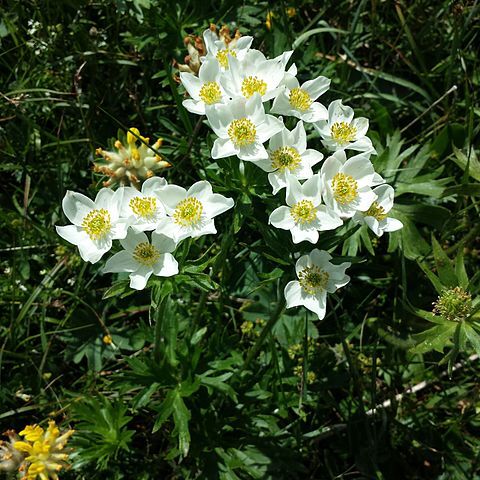Leaves 4--9; petiole 5--30 cm, villous or pubescent; leaf blade 3-sect, pentagonal, suborbicular, or orbicular-ovate, 3--7 × 4--12 cm, sparsely pubescent, villous, or subglabrous, margin ciliate; segments petiolulate or subsessile; central segment 3-parted to 3-cleft, rhombic-ovate or broadly rhombic, ultimate lobules ovate to linear; lateral segments unequally 2-or 3-parted, obliquely flabellate. Scapes 1 or 2, 10--50 cm, villous or sparsely puberulent; cyme 1--5(--7)-flowered. Involucral bracts 3 or more; bract blade 3-parted to 3-cleft, broadly rhombic to narrowly obovate, 2--6 cm, usually pubescent. Pedicel 2--5(--8) cm, pubescent. Sepals 5 or 6(or 7), white or yellowish, rarely pinkish, obovate, 12--18 × 6--10 mm, pilose, sparsely puberulent, subglabrous, or glabrous, basal veins 3--9, vein anastomoses 1--3(--5) or absent, base attenuate, apex rounded. Stamens 2--5 mm; filament usually linear, rarely slightly dilated; anther cylindric. Ovary subglobose, compressed, distinctly laterally winged, usually glabrous; style bent, short. Achene body obovoid, 5--8 × 4--6 mm, glabrous, rarely with solitary hairs; wings 0.8--1.4 mm wide; style hooked, 0.8--1.4 mm. Fl. May--Jul.
A small herb. It grows 50 cm high. There are 4-9 leaves. The leaves are in 3 sections and 5 sided or round. They are 3-7 cm long by 4-12 cm wide. The flowers are white and in clusters.

